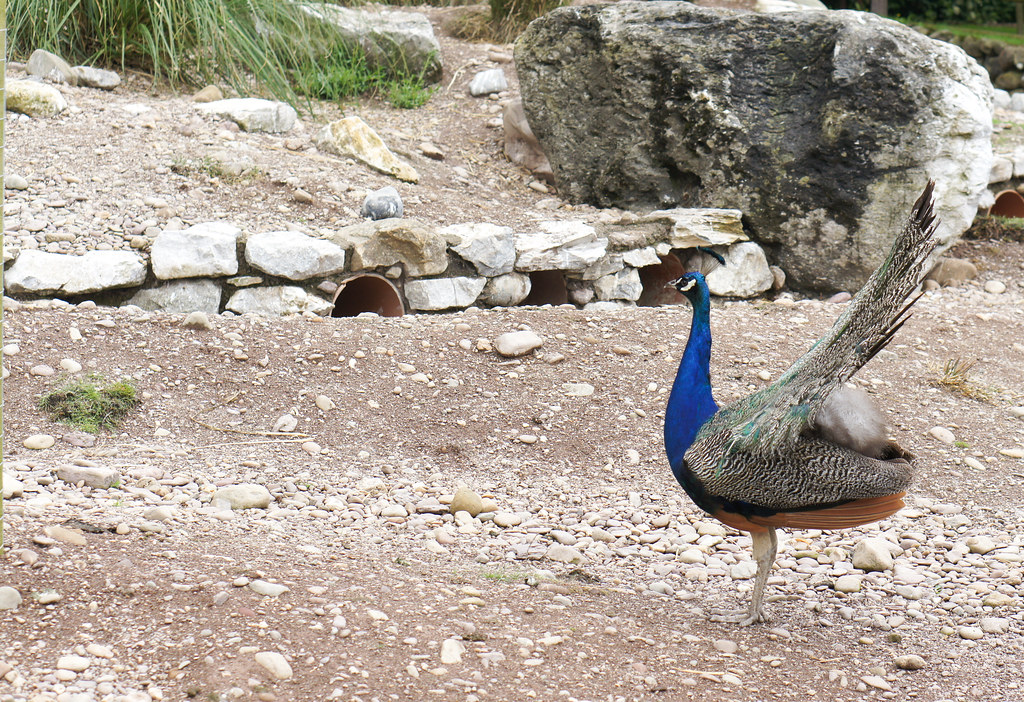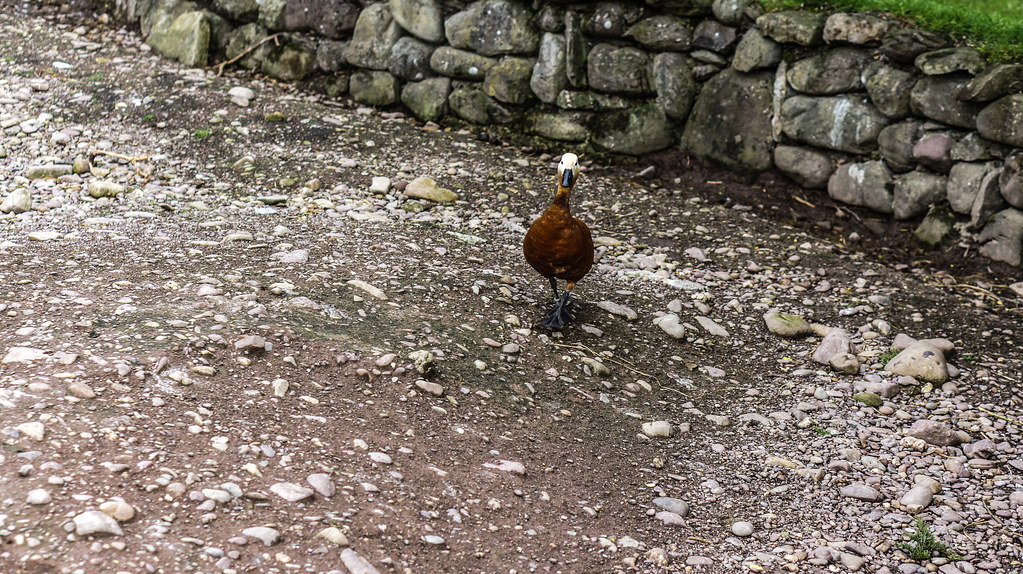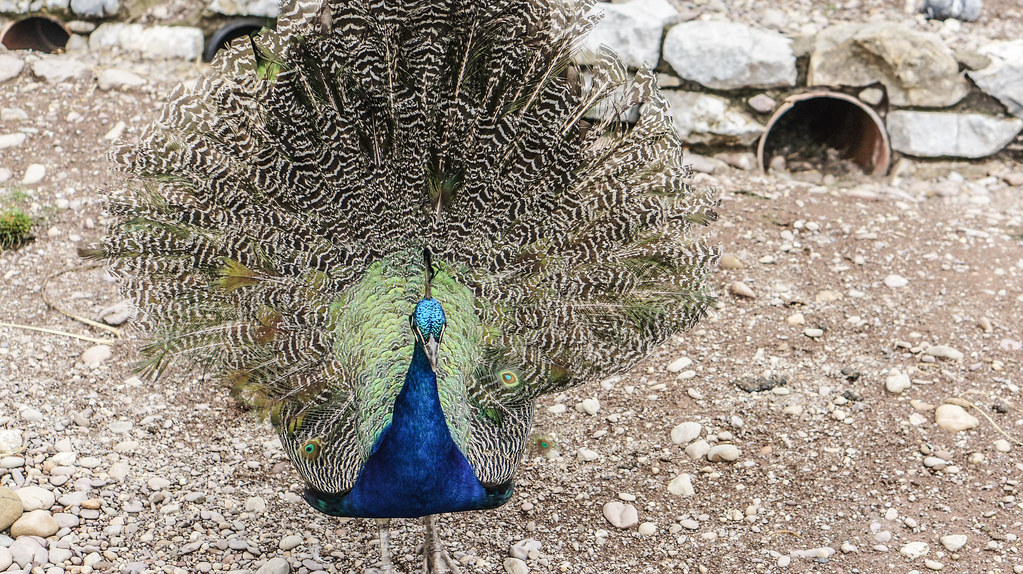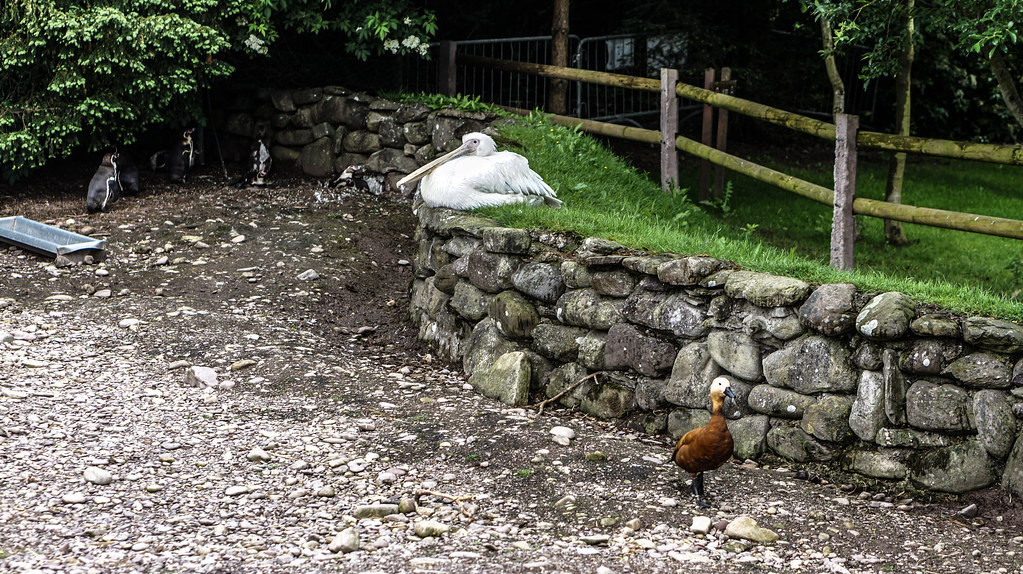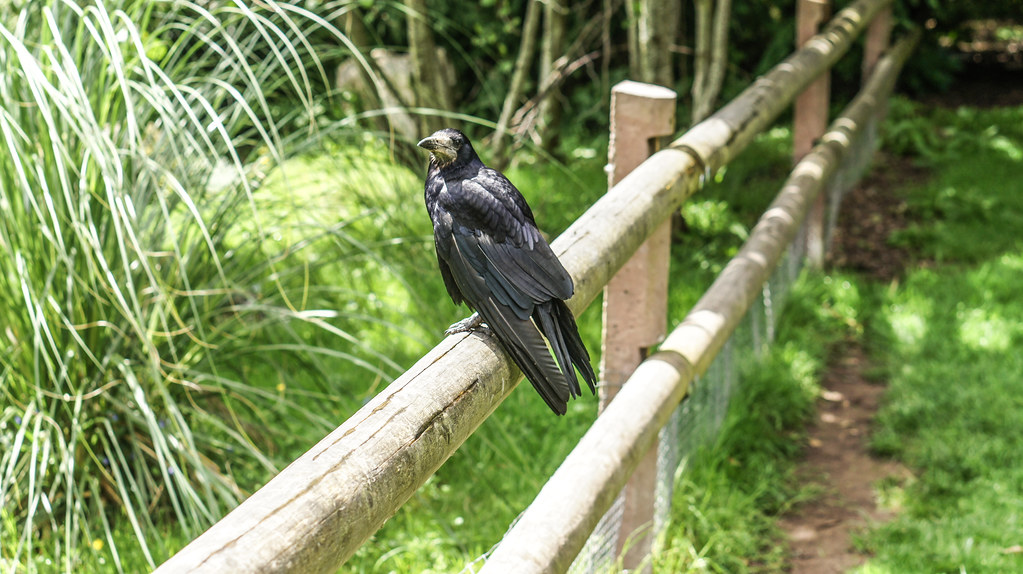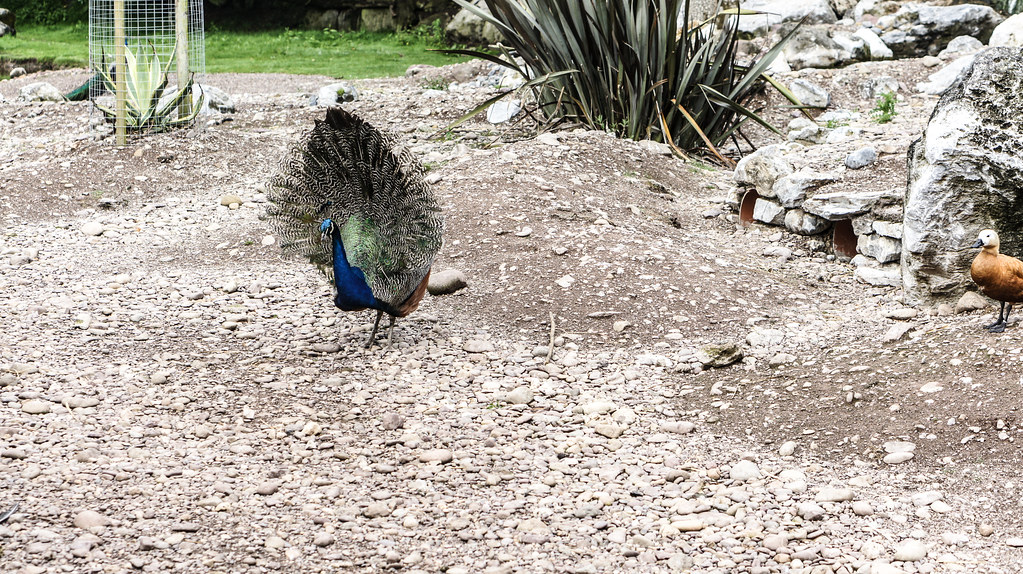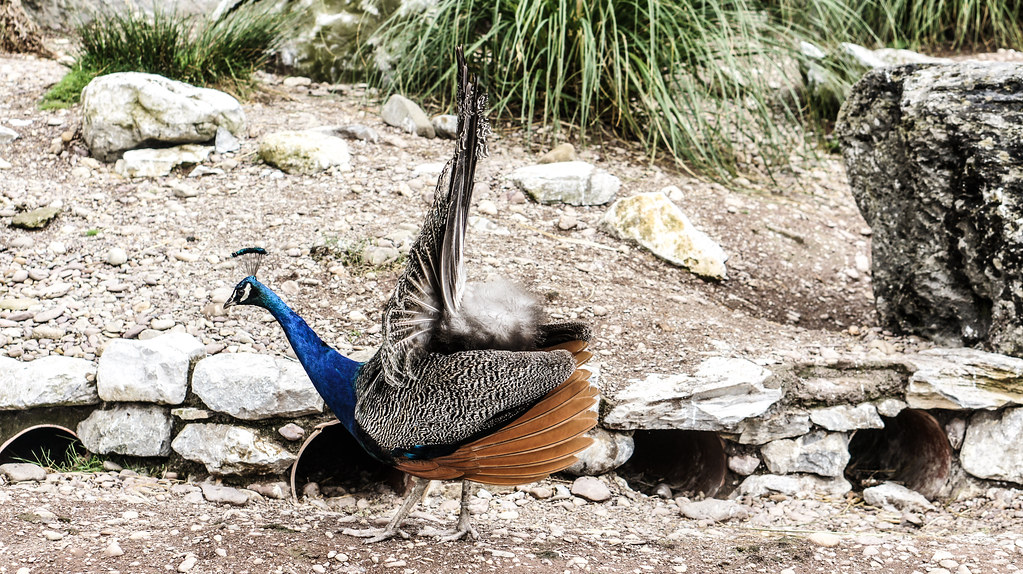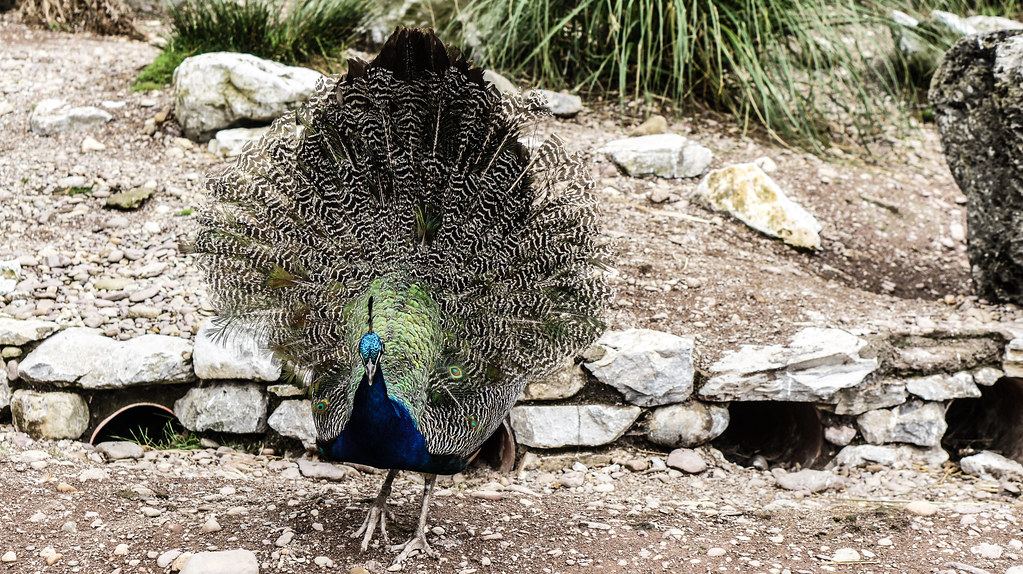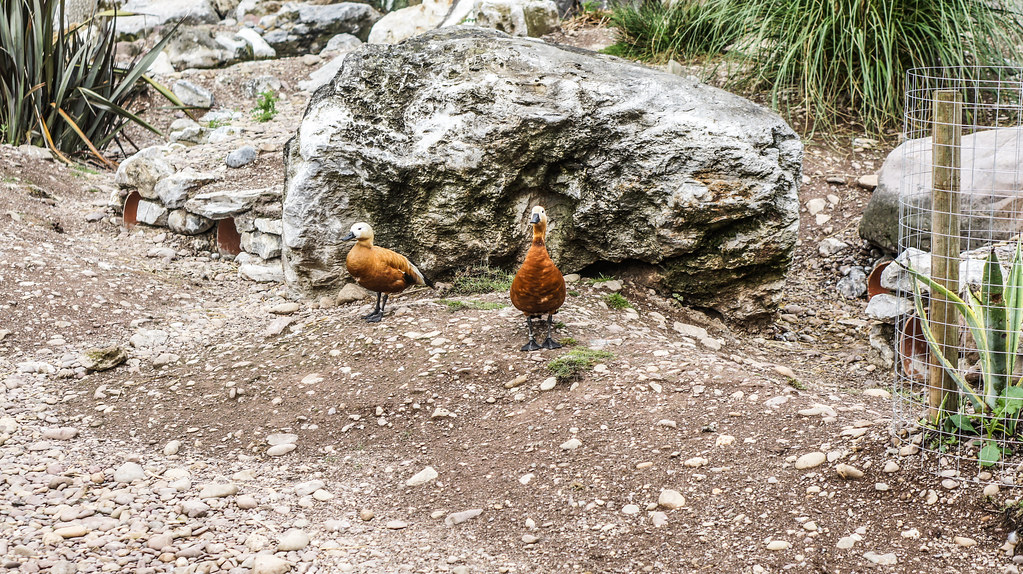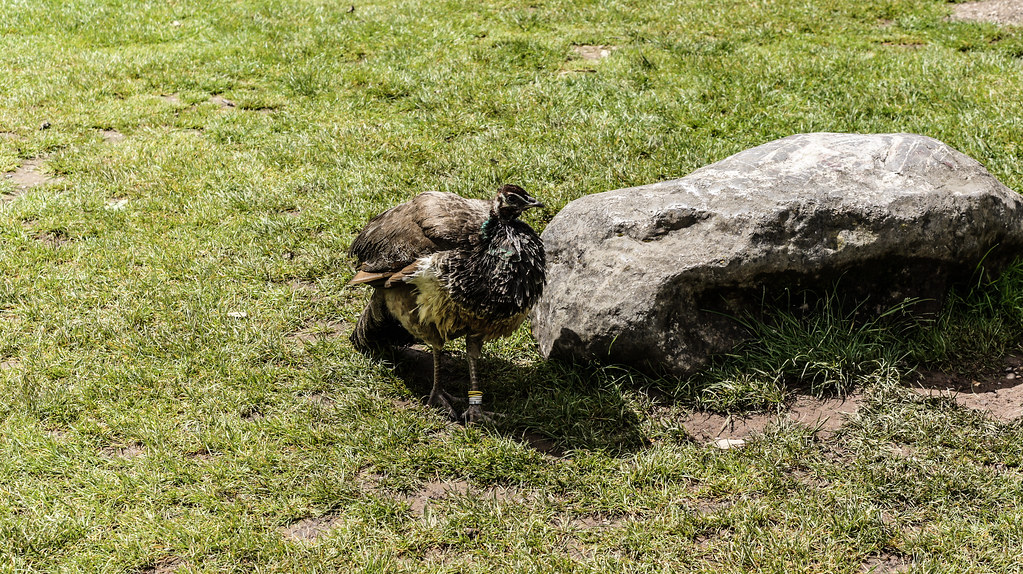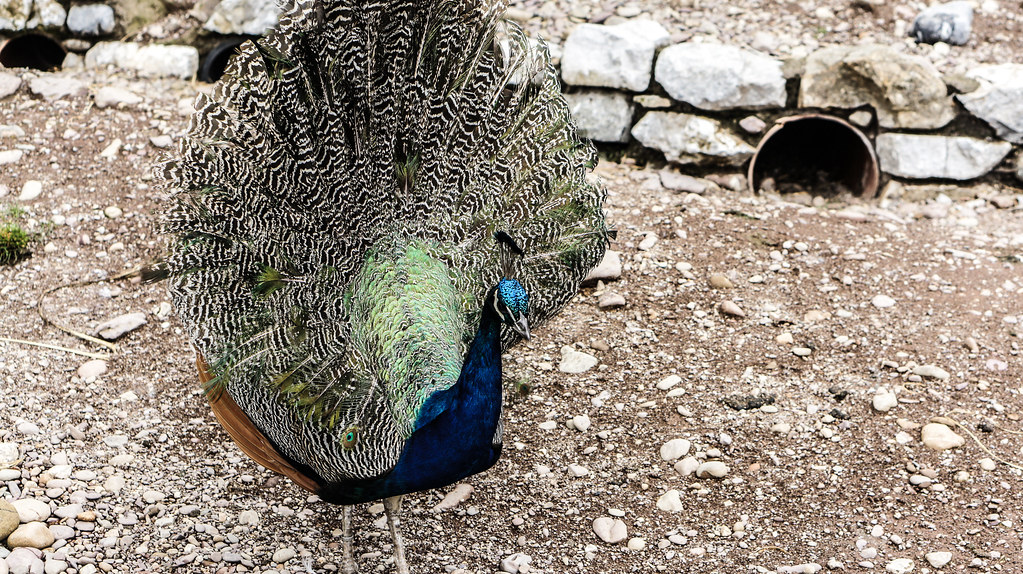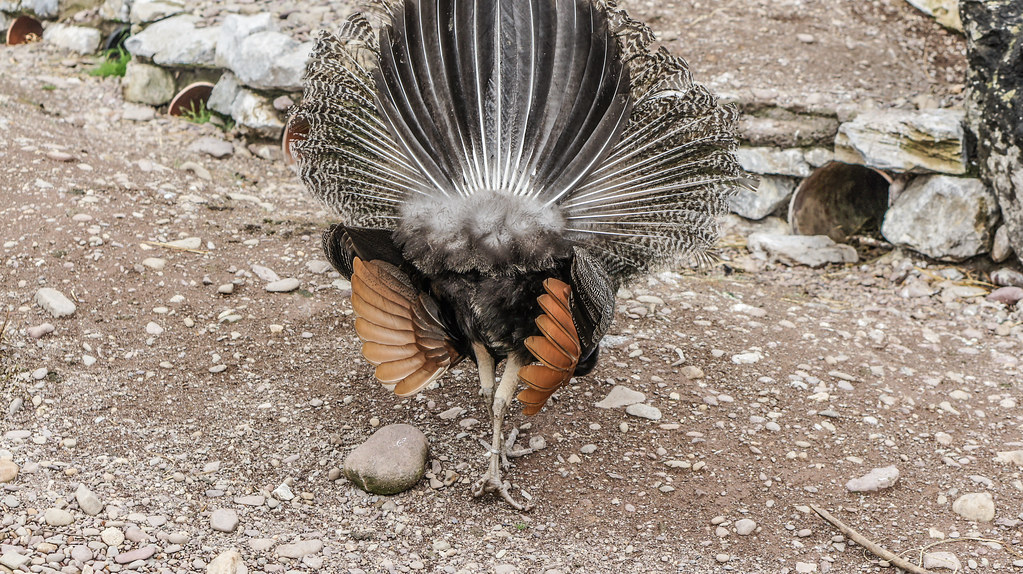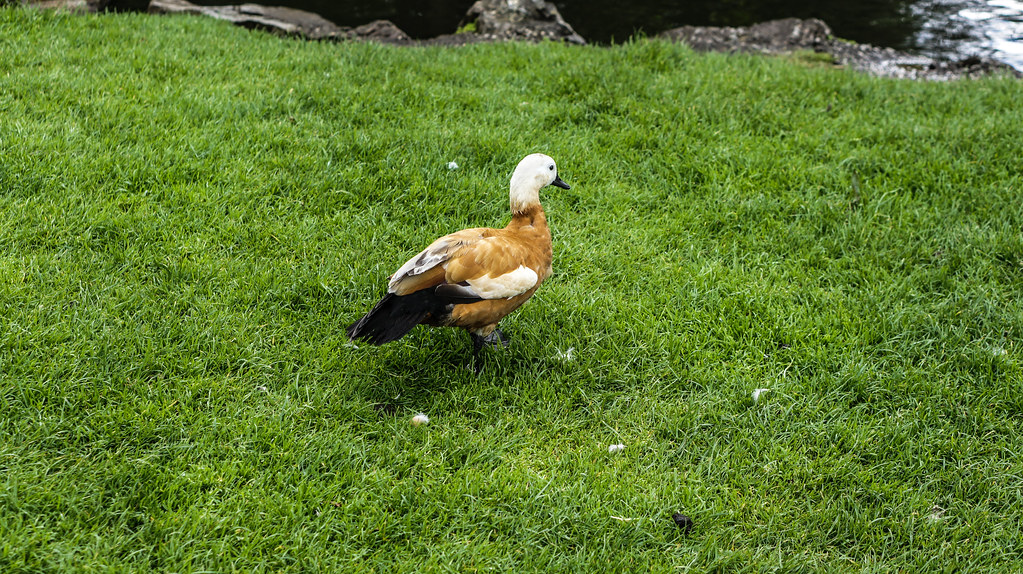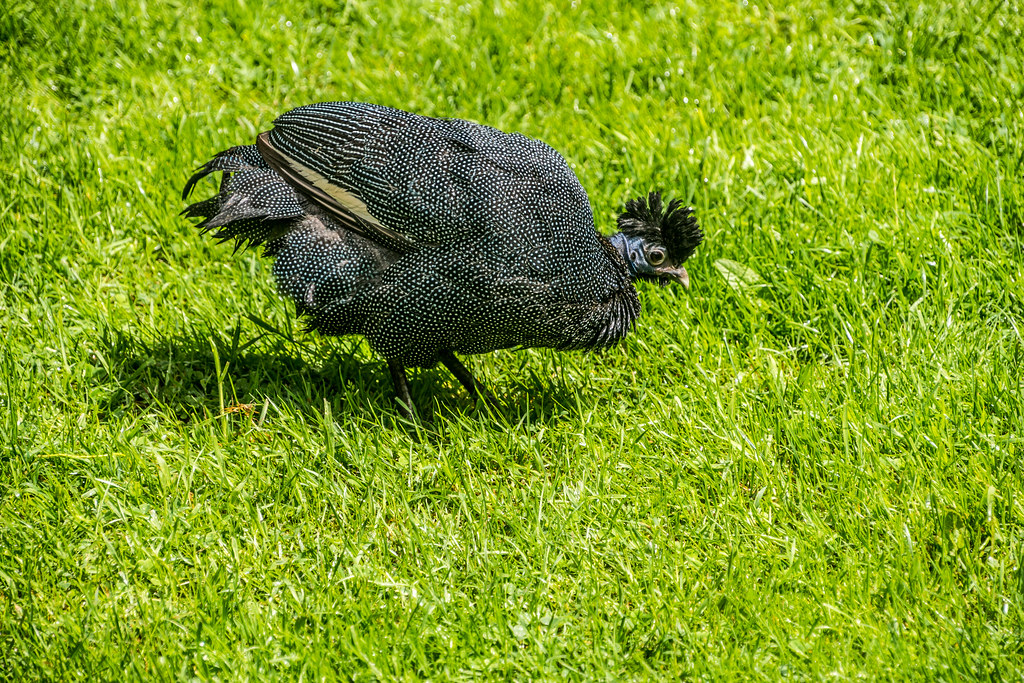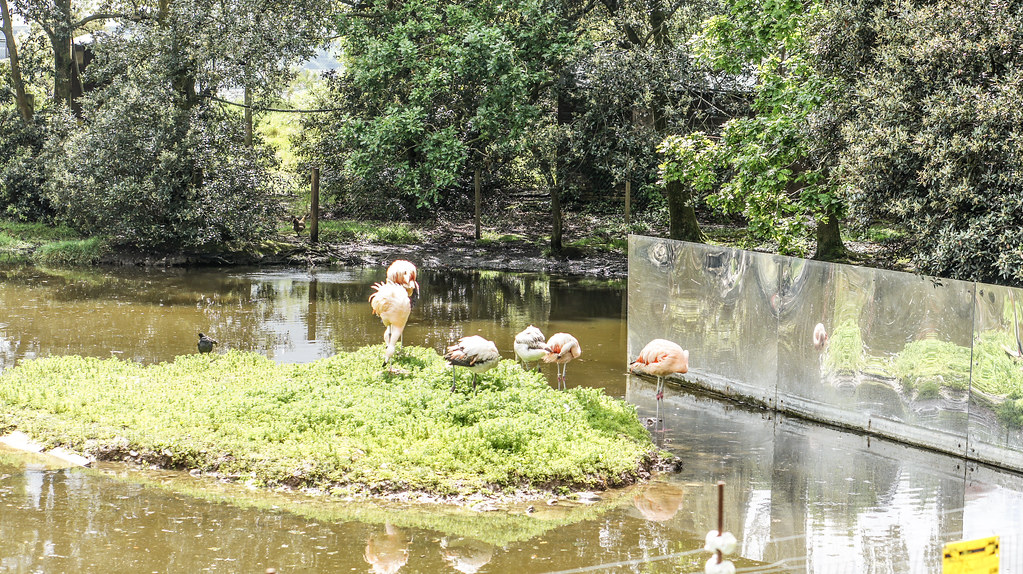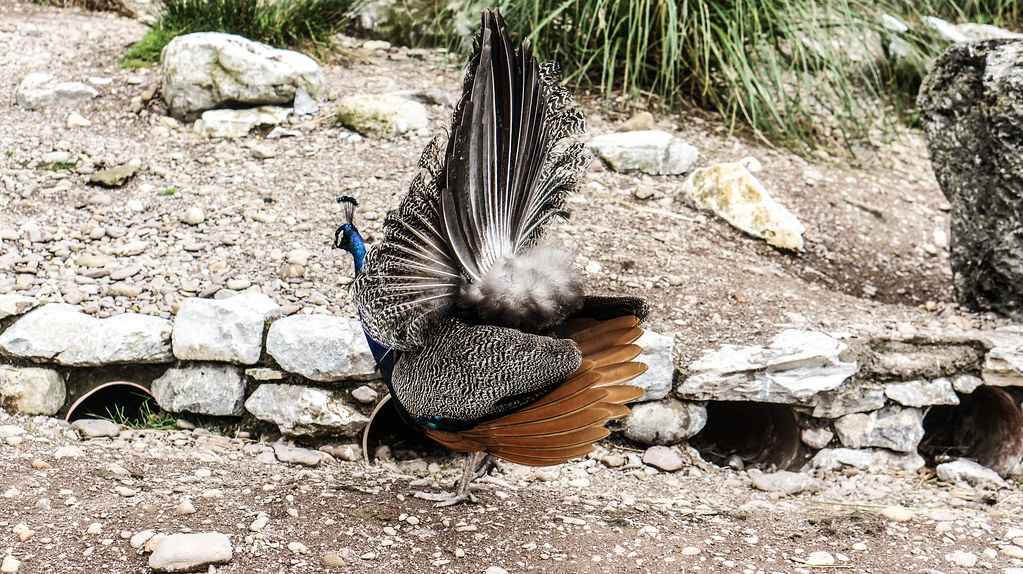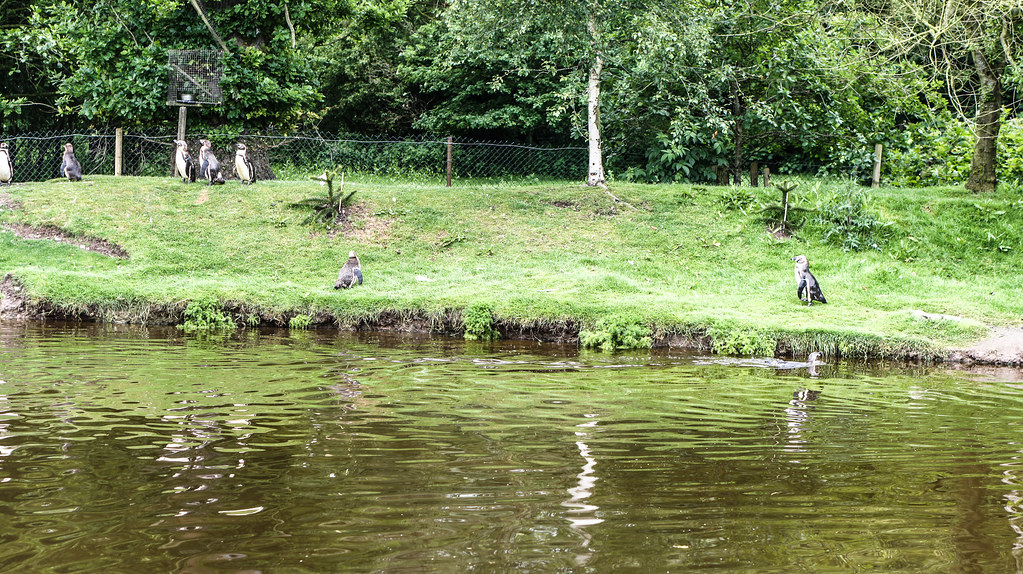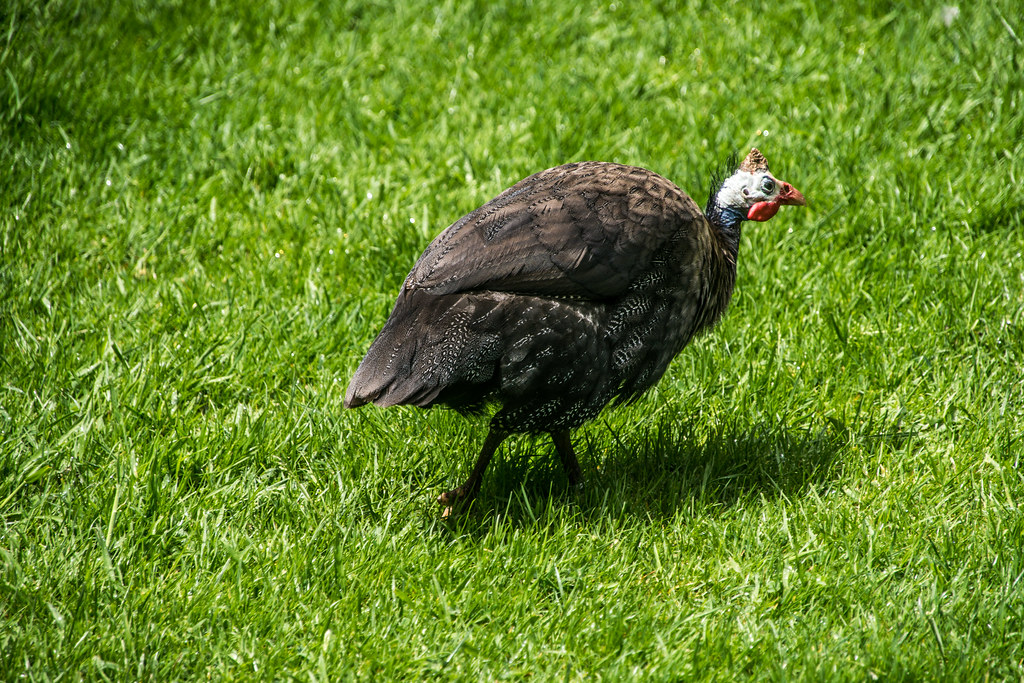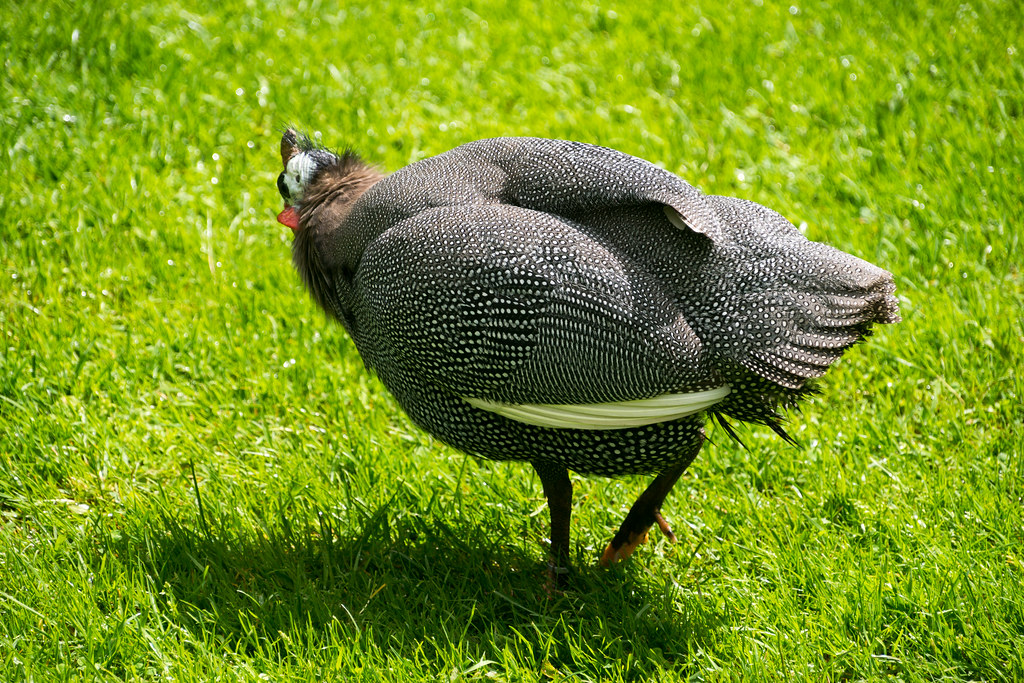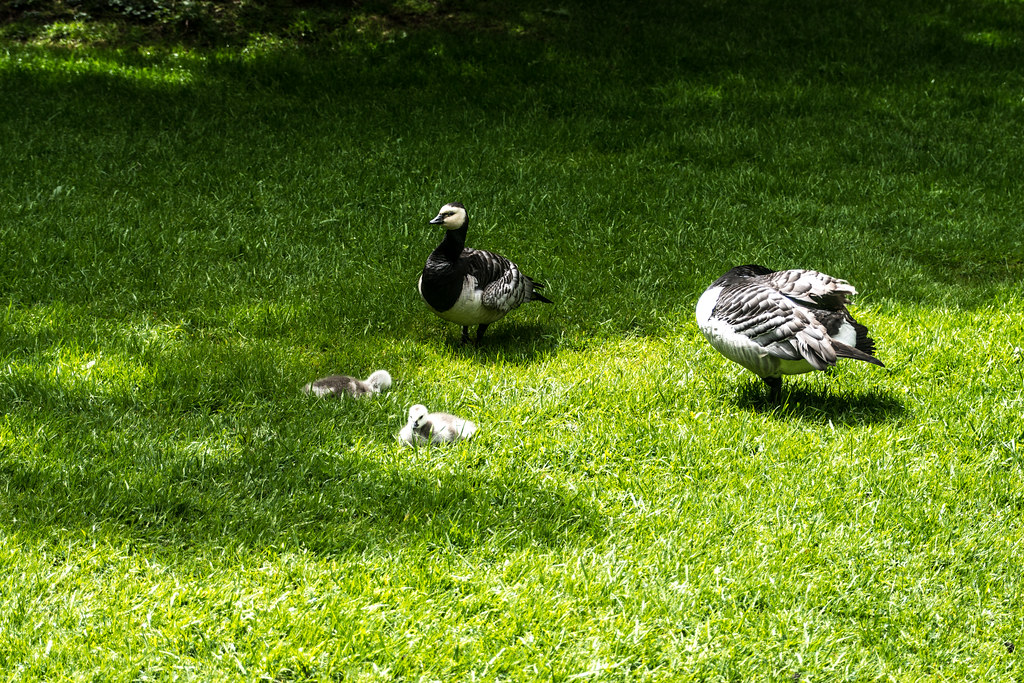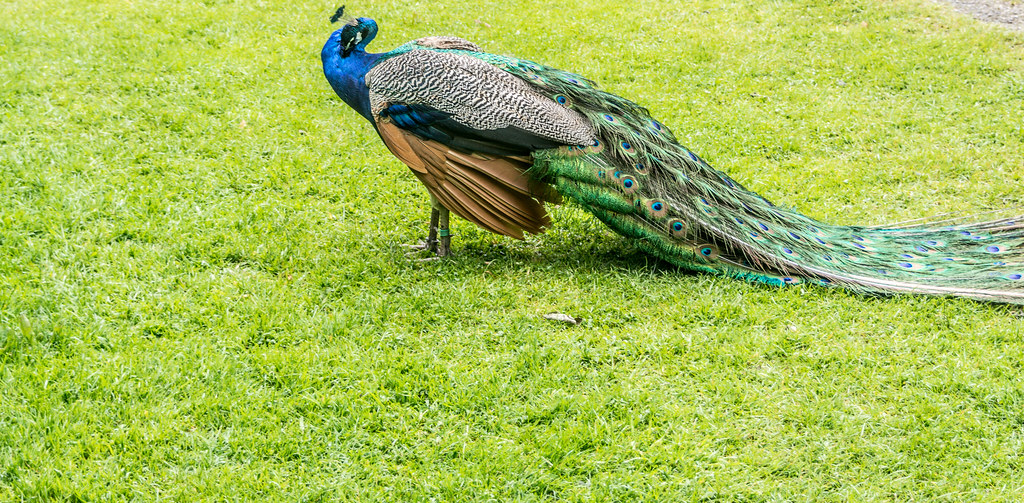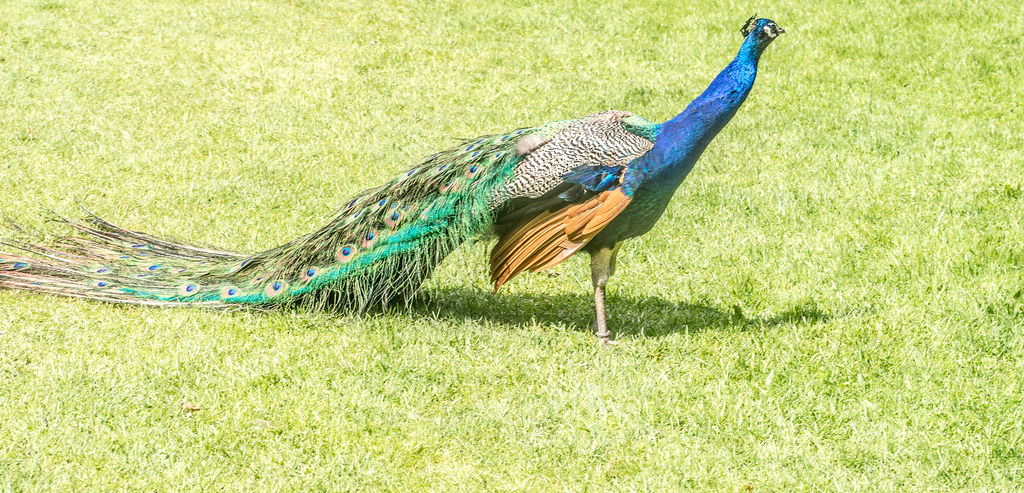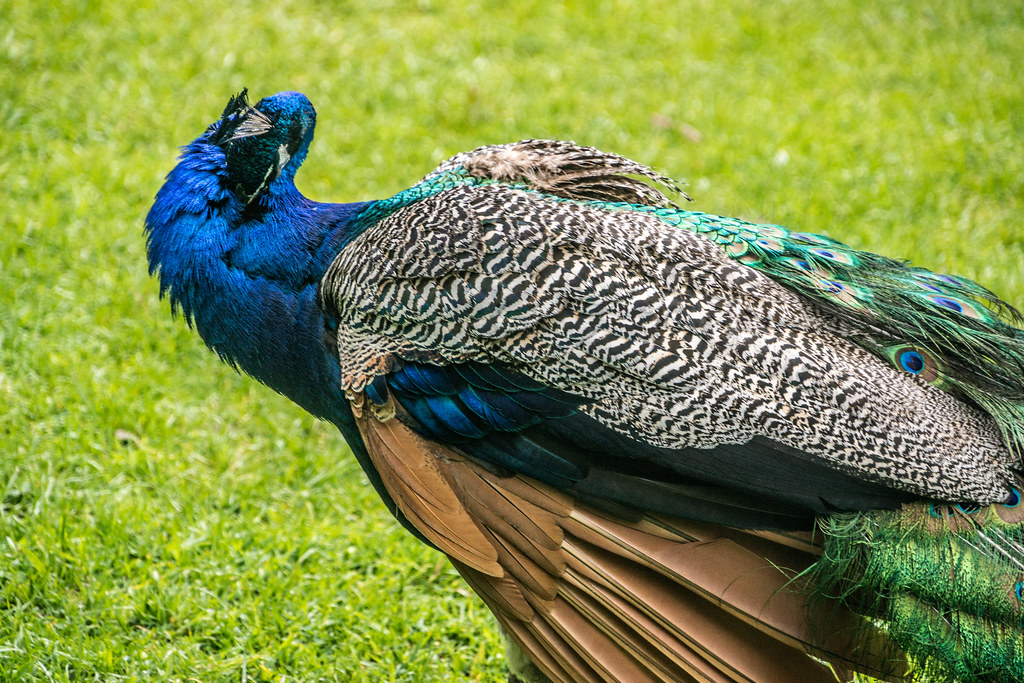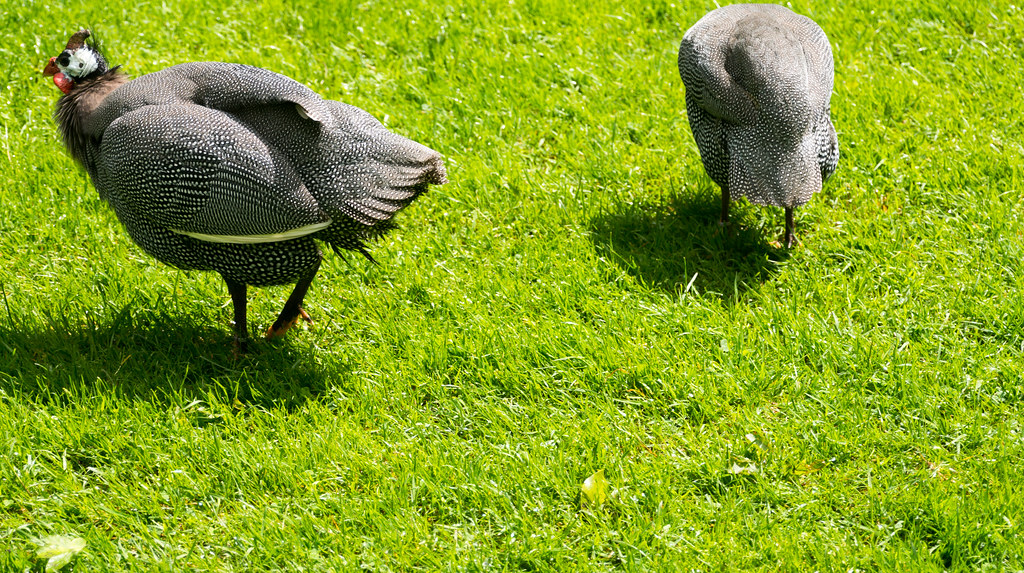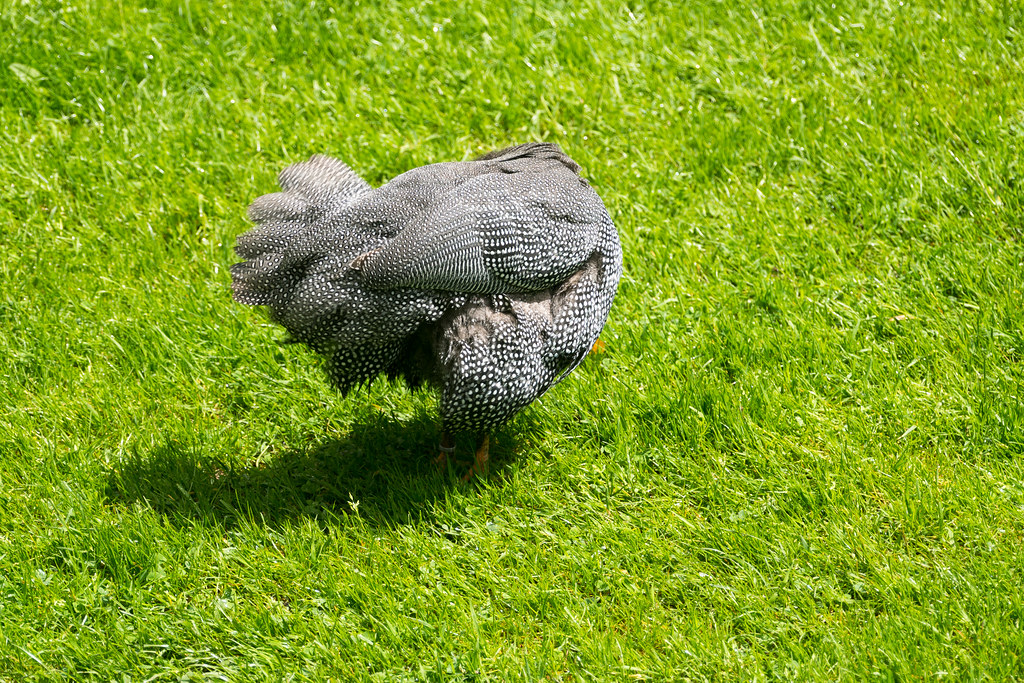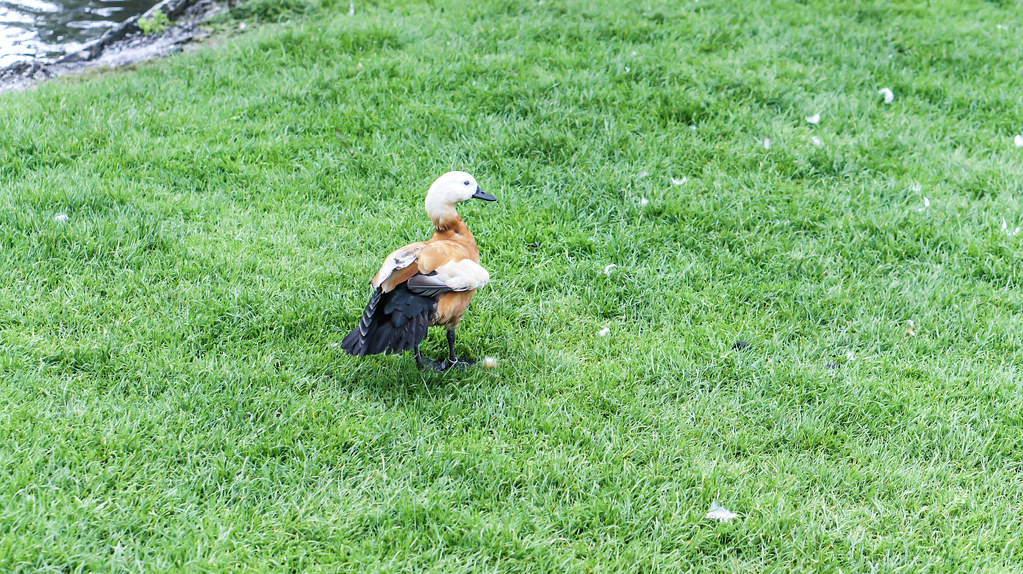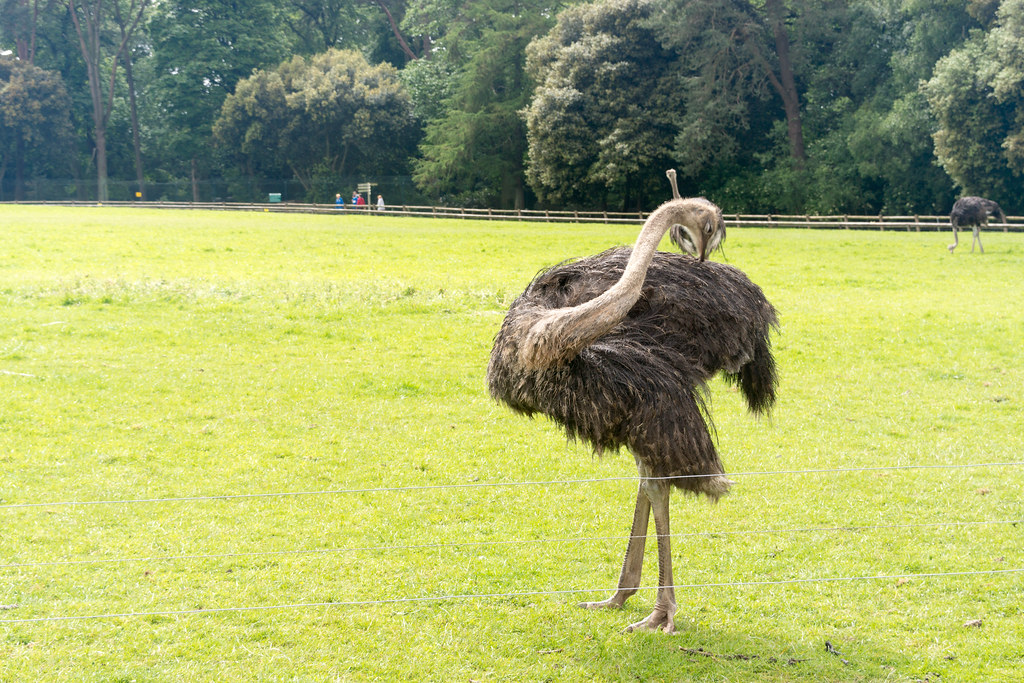BIRDS AT FOTA
Chilean Flamingo
The Chilean flamingo (Phoenicopterus chilensis) is a large species of flamingo at 110–130 cm (43–51 in) closely related to American flamingo and greater flamingo, with which it was sometimes considered conspecific.
It breeds in South America from Ecuador and Peru to Chile and Argentina and east to Brazil; it has been introduced into Germany and the Netherlands (colony on the border, Zwilbrockervenn). There is also a small population in Utah and California. Like all flamingos it lays a single chalky white egg on a mud mound.
The plumage is pinker than the slightly larger greater flamingo, but less so than Caribbean flamingo. It can be differentiated from these species by its greyish legs with pink joints (tibio-tarsal articulation), and also by the larger amount of black on the bill (more than half). Young chicks may have no sign of pink colouring whatsoever, but instead remain grey
The Chilean flamingo's bill is equipped with comb-like structures that enable it to filter food—mainly algae and plankton—from the water of the coastal mudflats, estuaries, lagoons and salt lakes where it lives.
Chilean flamingos live in large flocks in the wild and require crowded conditions to stimulate breeding. During breeding season, males and females display a variety of behaviours to attract mates, including head flagging—swivelling their heads from side-to-side in tandem—and wing salutes, where the wings are repeatedly opened and closed. Males and females cooperate in building a pillar-shaped mud nest, and both incubate the egg laid by the female. Upon birth, the chicks have grey plumage; they don't gain adult coloration for two-three years. Both male and female flamingos can produce a nutritious milk-like substance in their crop gland to feed their young.
Grey White Pelician
One of the largest flying birds in world, the Great White Pelican is a striking-looking animal. Generally weighing about 10kg and with a wingspan of nearly three metres, they are graceful and fast in the air or water but awkward on land. Males are larger than females and both sexes have long, distinctive beaks that are hooked at the end. Generally pure white, the bird has a pink facial patch around its eyes and pinkish, short legs.
Great White Pelicans have been present at the Park since the very beginning of Fota. The species continues to be free ranging and fishes in the natural salt water of the lakes area - particularly in the summer - to supplement its own diet. The bird has been spotted picking off young ducklings on occasion.
Humboldt Penguins
The Humboldt penguin (Spheniscus humboldti) (also termed Chilean penguin, Peruvian penguin, or patranca) is a South American penguin, that breeds in coastal Chile and Peru. Its nearest relatives are the African penguin, the Magellanic penguin and the Galápagos penguin. The penguin is named after the cold water current it swims in, which is itself named after Alexander von Humboldt, an explorer.
Humboldt penguins are medium-sized penguins, growing to 56–70 cm (22–28 in) long and a weight of 3.6-5.9 kg (8-13 lbs).They have a black head with a white border that runs from behind the eye, around the black ear-coverts and chin, and joins at the throat. They have blackish-grey upperparts and whitish underparts, with a black breast-band that extends down the flanks to the thigh. They have a fleshy-pink base to the bill. Juveniles have dark heads and no breast-band. They have spines on their tongue which they use to hold their prey.
Humboldt penguins nest on islands and rocky coasts, burrowing holes in guano and sometimes using scrapes or caves. In South America the Humboldt penguin is found only along the Pacific coast,and the range of the Humboldt penguin overlaps that of the Magellanic penguin on the central Chilean coast. It is vagrant in Ecuador and Colombia.
Changes to the cold, nutrient-laden current that moves up from the south and into the Pacific Ocean is having a considerable effect on the Humboldt Penguin’s environment and, significantly, its prey. Over fishing and ocean acidification are also threats and the population in the wild is now thought to number between just 3,300 and 12,000 individuals.
The Park's Penguins are mainly fed Spratt, which are very similar to the fish they would eat in the wild. Their Fota habitat is connected to Cork Harbour, which provides the birds with natural sea water, and the numbers in Cork continue to grow following another influx of birds from Belfast Zoo.
Indian Peafowl
The Indian peafowl or blue peafowl (Pavo cristatus), a large and brightly coloured bird, is a species of peafowl native to South Asia, but introduced in many other parts of the world.
The male peacock is predominantly blue with a fan-like crest of spatula-tipped wire-like feathers and is best known for the long train made up of elongated upper-tail covert feathers which bear colourful eyespots. These stiff feathers are raised into a fan and quivered in a display during courtship. Females lack the train, and have a greenish lower neck and duller brown plumage. The Indian peafowl lives mainly on the ground in open forest or on land under cultivation where they forage for berries, grains but also prey on snakes, lizards, and small rodents. Their loud calls make them easy to detect, and in forest areas often indicate the presence of a predator such as a tiger. They forage on the ground in small groups and usually try to escape on foot through undergrowth and avoid flying, though they fly into tall trees to roost.
The function of the peacock's elaborate train has been debated for over a century. In the 19th century, Charles Darwin found it a puzzle, hard to explain through ordinary natural selection. His later explanation, sexual selection, is widely but not universally accepted. In the 20th century, Amotz Zahavi argued that the train was a handicap, and that males were honestly signalling their fitness in proportion to the splendour of their trains. Despite extensive study, opinions remain divided on the mechanisms involved.
The bird is celebrated in Indian and Greek mythology and is the national bird of India. The Indian peafowl is listed as of Least Concern by the International Union for Conservation of Nature (IUCN).
Peafowl are quite common in Ireland because of the country’s connection with the British Empire and the historic demand for the bird to be kept on some of our large estates. Males provide magnificent spectacles with their tail feathers, a sight that continues to draw visitors’ attention in the Park. The bird has a long-established link with Fota and has once again been increasing its numbers in Cork over recent years.
Ostrich
The ostrich or common ostrich (Struthio camelus) is either one or two species of large flightless birds native to Africa, the only living member(s) of the genus Struthio, which is in the ratite family. Starting in 2014, the Somali ostrich is now considered a full species separate from the common ostrich.
The ostrich shares the order Struthioniformes with the kiwis, emus, rheas and cassowaries. However, phylogenetic studies have shown that it is the basal extant member of Palaeognathae and is thus equally closely related to flighted tinamous. It is distinctive in its appearance, with a long neck and legs, and can run at up to about 70 km/h (19 m/s; 43 mph),the fastest land speed of any bird. The ostrich is the largest living species of bird and lays the largest eggs of any living bird (extinct elephant birds of Madagascar and the giant moa of New Zealand laid larger eggs).
The ostrich's diet consists mainly of plant matter, though it also eats invertebrates. It lives in nomadic groups of 5 to 50 birds. When threatened, the ostrich will either hide itself by lying flat against the ground, or run away. If cornered, it can attack with a kick of its powerful legs. Mating patterns differ by geographical region, but territorial males fight for a harem of two to seven females.
The Chilean flamingo (Phoenicopterus chilensis) is a large species of flamingo at 110–130 cm (43–51 in) closely related to American flamingo and greater flamingo, with which it was sometimes considered conspecific.
It breeds in South America from Ecuador and Peru to Chile and Argentina and east to Brazil; it has been introduced into Germany and the Netherlands (colony on the border, Zwilbrockervenn). There is also a small population in Utah and California. Like all flamingos it lays a single chalky white egg on a mud mound.
The plumage is pinker than the slightly larger greater flamingo, but less so than Caribbean flamingo. It can be differentiated from these species by its greyish legs with pink joints (tibio-tarsal articulation), and also by the larger amount of black on the bill (more than half). Young chicks may have no sign of pink colouring whatsoever, but instead remain grey
The Chilean flamingo's bill is equipped with comb-like structures that enable it to filter food—mainly algae and plankton—from the water of the coastal mudflats, estuaries, lagoons and salt lakes where it lives.
Chilean flamingos live in large flocks in the wild and require crowded conditions to stimulate breeding. During breeding season, males and females display a variety of behaviours to attract mates, including head flagging—swivelling their heads from side-to-side in tandem—and wing salutes, where the wings are repeatedly opened and closed. Males and females cooperate in building a pillar-shaped mud nest, and both incubate the egg laid by the female. Upon birth, the chicks have grey plumage; they don't gain adult coloration for two-three years. Both male and female flamingos can produce a nutritious milk-like substance in their crop gland to feed their young.
Grey White Pelician
One of the largest flying birds in world, the Great White Pelican is a striking-looking animal. Generally weighing about 10kg and with a wingspan of nearly three metres, they are graceful and fast in the air or water but awkward on land. Males are larger than females and both sexes have long, distinctive beaks that are hooked at the end. Generally pure white, the bird has a pink facial patch around its eyes and pinkish, short legs.
Great White Pelicans have been present at the Park since the very beginning of Fota. The species continues to be free ranging and fishes in the natural salt water of the lakes area - particularly in the summer - to supplement its own diet. The bird has been spotted picking off young ducklings on occasion.
Humboldt Penguins
The Humboldt penguin (Spheniscus humboldti) (also termed Chilean penguin, Peruvian penguin, or patranca) is a South American penguin, that breeds in coastal Chile and Peru. Its nearest relatives are the African penguin, the Magellanic penguin and the Galápagos penguin. The penguin is named after the cold water current it swims in, which is itself named after Alexander von Humboldt, an explorer.
Humboldt penguins are medium-sized penguins, growing to 56–70 cm (22–28 in) long and a weight of 3.6-5.9 kg (8-13 lbs).They have a black head with a white border that runs from behind the eye, around the black ear-coverts and chin, and joins at the throat. They have blackish-grey upperparts and whitish underparts, with a black breast-band that extends down the flanks to the thigh. They have a fleshy-pink base to the bill. Juveniles have dark heads and no breast-band. They have spines on their tongue which they use to hold their prey.
Humboldt penguins nest on islands and rocky coasts, burrowing holes in guano and sometimes using scrapes or caves. In South America the Humboldt penguin is found only along the Pacific coast,and the range of the Humboldt penguin overlaps that of the Magellanic penguin on the central Chilean coast. It is vagrant in Ecuador and Colombia.
Changes to the cold, nutrient-laden current that moves up from the south and into the Pacific Ocean is having a considerable effect on the Humboldt Penguin’s environment and, significantly, its prey. Over fishing and ocean acidification are also threats and the population in the wild is now thought to number between just 3,300 and 12,000 individuals.
The Park's Penguins are mainly fed Spratt, which are very similar to the fish they would eat in the wild. Their Fota habitat is connected to Cork Harbour, which provides the birds with natural sea water, and the numbers in Cork continue to grow following another influx of birds from Belfast Zoo.
Indian Peafowl
The Indian peafowl or blue peafowl (Pavo cristatus), a large and brightly coloured bird, is a species of peafowl native to South Asia, but introduced in many other parts of the world.
The male peacock is predominantly blue with a fan-like crest of spatula-tipped wire-like feathers and is best known for the long train made up of elongated upper-tail covert feathers which bear colourful eyespots. These stiff feathers are raised into a fan and quivered in a display during courtship. Females lack the train, and have a greenish lower neck and duller brown plumage. The Indian peafowl lives mainly on the ground in open forest or on land under cultivation where they forage for berries, grains but also prey on snakes, lizards, and small rodents. Their loud calls make them easy to detect, and in forest areas often indicate the presence of a predator such as a tiger. They forage on the ground in small groups and usually try to escape on foot through undergrowth and avoid flying, though they fly into tall trees to roost.
The function of the peacock's elaborate train has been debated for over a century. In the 19th century, Charles Darwin found it a puzzle, hard to explain through ordinary natural selection. His later explanation, sexual selection, is widely but not universally accepted. In the 20th century, Amotz Zahavi argued that the train was a handicap, and that males were honestly signalling their fitness in proportion to the splendour of their trains. Despite extensive study, opinions remain divided on the mechanisms involved.
The bird is celebrated in Indian and Greek mythology and is the national bird of India. The Indian peafowl is listed as of Least Concern by the International Union for Conservation of Nature (IUCN).
Peafowl are quite common in Ireland because of the country’s connection with the British Empire and the historic demand for the bird to be kept on some of our large estates. Males provide magnificent spectacles with their tail feathers, a sight that continues to draw visitors’ attention in the Park. The bird has a long-established link with Fota and has once again been increasing its numbers in Cork over recent years.
Ostrich
The ostrich or common ostrich (Struthio camelus) is either one or two species of large flightless birds native to Africa, the only living member(s) of the genus Struthio, which is in the ratite family. Starting in 2014, the Somali ostrich is now considered a full species separate from the common ostrich.
The ostrich shares the order Struthioniformes with the kiwis, emus, rheas and cassowaries. However, phylogenetic studies have shown that it is the basal extant member of Palaeognathae and is thus equally closely related to flighted tinamous. It is distinctive in its appearance, with a long neck and legs, and can run at up to about 70 km/h (19 m/s; 43 mph),the fastest land speed of any bird. The ostrich is the largest living species of bird and lays the largest eggs of any living bird (extinct elephant birds of Madagascar and the giant moa of New Zealand laid larger eggs).
The ostrich's diet consists mainly of plant matter, though it also eats invertebrates. It lives in nomadic groups of 5 to 50 birds. When threatened, the ostrich will either hide itself by lying flat against the ground, or run away. If cornered, it can attack with a kick of its powerful legs. Mating patterns differ by geographical region, but territorial males fight for a harem of two to seven females.
THE PHOTO DIARY IS NOT LIMITED TO CORK AS I ONLY VISIT THE CITY ONCE EVERY YEAR AND 2020 MAY BE AN EXCEPTION. I AM BASED IN DUBLIN BUT DURING THE SUMMER MONTHS I VISIT BELFAST, LIMERICK, GALWAY, KILKENNY AND WATERFORD AND USUALLY DEVOTE A WEEK TO PHOTOGRAPHING EACH OF THE CITIES IN QUESTION
You will find links to buy products from Amazon, Google and other partners. If you click on these links, you’ll find that the URL includes a small extra piece of text which identifies that the click came from my websites. This text is an affiliate code, and it means that I get a small percentage of the money you spend if you choose to buy that product, or, in some cases, other products from the site soon after. These affiliate links help pay the costs of producing my websites and ensure that the content is free to you.
